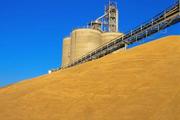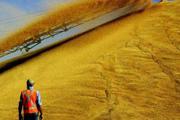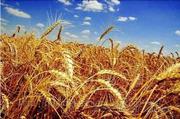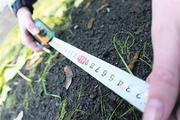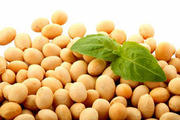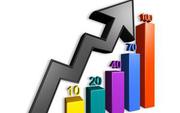Top-News
Leonid Kozachenko: Agriculture of Ukraine has always been truly industrial
Agriculture is one of the most powerful branches of the economy of Ukraine. Today almost every second dollar which Ukraine gets due to exports of goods is the money received from selling grains, oil, sugar, poultry and other agrarian commodities. But doing agrarian business in Ukraine is not as simple as it may seem. You should be really smart, persistent and ready for any surprises from the Government, says Leonid Kozachenko, the President of the Ukrainian Agrarian Confederation, Ukrainian MP.
- Read more
- 3755 reads
New ‘Locomotive’ Powering Ukraine as Economy Retools After War
Ukrainian agrarians are the main power which makes economy of the country recover after two-year recession. Ukraine is starting to live up to its reputation as Europe’s breadbasket, says Bloomberg in the article 'New ‘Locomotive’ Powering Ukraine as Economy Retools After War'.
Exports of wheat, barley and sunflower oil are at or near all-time highs, part of an agricultural revival that began to take hold in 2013. The industry’s rise coincides with declines in export mainstays such as steel and iron ore, which are produced largely in the nation’s east and have suffered amid the conflict there with Russian-backed insurgents. Trade data due Tuesday are set to underline the shift.
- Read more
- 3193 reads
Agriculture ministry supports farmers to fight for fair prices for fertilizers
The introduction of antidumping duties imposed on Russian urea and urea-ammonium nitrate (UAN) should be postponed until Ukrainian parliament passes the bill concerning zero nitrogen fertilizers duties for other countries.
- Read more
- 3082 reads
Bloomberg: Record Harvest Spells More Trouble for Conflict-Hit Ukraine
The battle between farmers and Ukrzaliznytsia is going on. "Record Harvest Spells More Trouble for Conflict-Hit Ukraine" is a title of new Bloomberg's article.
According to Bloomberg, as if Ukraine’s battered economy and political conflicts with Russia weren’t dismaying enough, a logjam on the country’s Soviet-era rail network is preventing some farmers from shipping bumper harvests in the breadbasket of Eastern Europe.
- Read more
- 3158 reads
Ukraine: agricultural commodities production increased
In January-September of 2016, the production volumes of agricultural commodities in Ukraine increased by 0.9% compared with the same period in 2015 at the expense of rising production volumes of plant growing commodities, announced the State Statistics Service of Ukraine on October 13.
- Read more
- 3322 reads
Land Moratorium is Prolonged.Victory or Treason?
The prolonging of the moratorium on sale of the agricultural land for one more year alone does not solve the problem of the Ukrainian farmers. Actually, it will just mean the extension of "convulsions". This is the conclusion of the Ukrainian Agrarian Confederation lawyers.
- Read more
- 26815 reads
Ukraine harvested over 45 mln tonnes of grains
As of October 4, Ukrainian agrarians harvested 45.08 mln tonnes of grains throughout the areas of 11.149 mln ha, or 78% of the plan. The average yield totaled 4.04 t/ha, reported the Ministry of Agrarian Policy and Food of Ukraine. At the same time, on the same date last year the production volumes reached 43.5 mln tonnes.
- Read more
- 2903 reads
Russia has to double soybean production volumes
he Ministry of Agriculture of Russia plans to double soybean production volumes in the country, declared the Minister of Agriculture of the Russian Federation, Alexander Tkachev on August 31. According to him, increasing of the domestic production of the oilseed would break the dependence on imports of low-quality soybeans, including genetically modified oilseed, as well as allow increasing the export potential.
- Read more
- 2957 reads
Annually flour exports increased by 30-35%
Ukrainian flour exports will grow annually by 30-35%, forecasted the Chairman of the Board of Directors the agricultural holding KSG Agro, Sergiy Kasianov on August 23. According to him, high demand for wheat flour from foreign buyers forms the growth of the export volumes. Milling enterpises of KSG Agro do not have any alternative to find access to export markets, as the domestic consumption of flour continues gradually reducing. In fact, the exports of flour helps the industry to survive, said S.Kasianov.
- Read more
- 2700 reads
Ukraine decreased production of buckwheat groats
According to the State Statistics Service, in 2015 Ukraine produced slightly more than 347 thsd tonnes of groats, a decrease of 1% compared with the indicator of 2014 (350 thsd tonnes). At the same time, some segments demonstrated significant decline of production volumes. Thus, in 2015 the production volumes of buckwheat groats decreased by 25%, and totaled 68.3 thsd tonnes, against 90.9 thsd tonnes in the previous year.
- Read more
- 2117 reads

